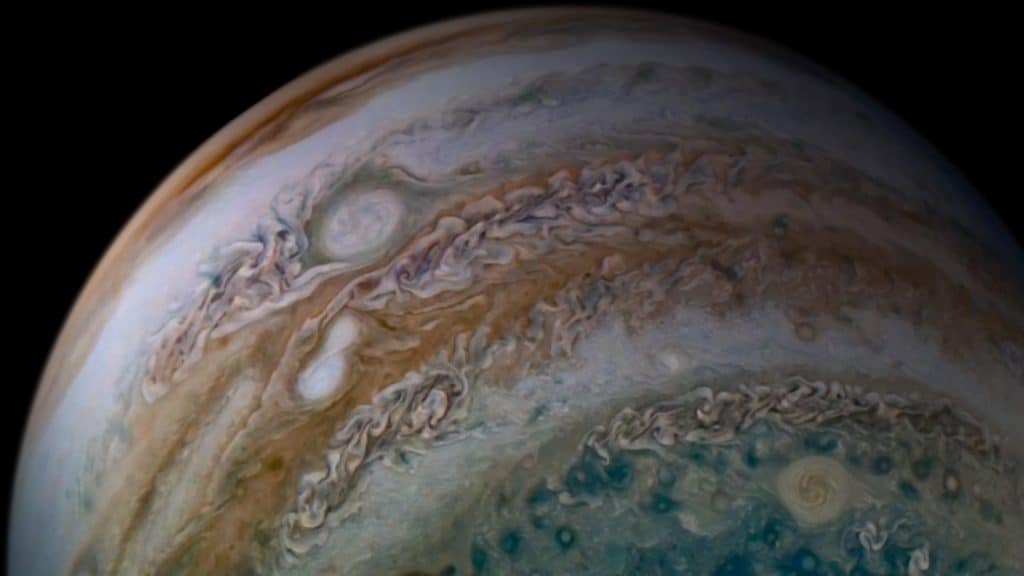
The swirly planet looks spectacular.
Starting off the week with something to cheer you up, NASA’s Juno mission has returned some mindblowing images, showcasing Jupiter like never before. The artistic looking photos place the gas planet’s stormy atmosphere in centre stage, showing iridescent clouds forming together and making the largest planet in the solar system look like a fancy, giant marble. [Featured image: NASA, taken April 10, 2020]

Almost resembling a van Gogh painting, the latest images reveal Jupiter’s tumultuous northern regions during a close approach by JunoCam – which was 5,375 miles away from Jupiter’s clouds during its closest flyby. After analysing the swirls, NASA’s scientists have revealed that the planet features ‘pop-up’ clouds, which rise above the surrounding features and stand out at the tops and edges of the swirling patterns, showing great depth.

Speaking of the images, NASA said: “Notable features in this view are the long, thin bands that run through the center of the image from top to bottom. Juno has observed these long streaks since its first close pass by Jupiter in 2016. The streaks are layers of haze particles that float above the underlying cloud features. Scientists don’t yet know exactly what these hazes are made of or how they form. Two jet streams in Jupiter’s atmosphere flank either side of the region where the narrow bands of haze typically appear, and some researchers speculate those jet streams may influence the formation of the high hazes.”

The Juno mission launched in 2011, arriving at Jupiter in 2016. The mission aims to understand the origin and evolution of the gas planet, measuring its deep atmosphere and observing its auroras. The mission makes close ‘flybys’ over Jupiter’s clouds every 53 days, and is not set to complete its studies until mid-2021.

